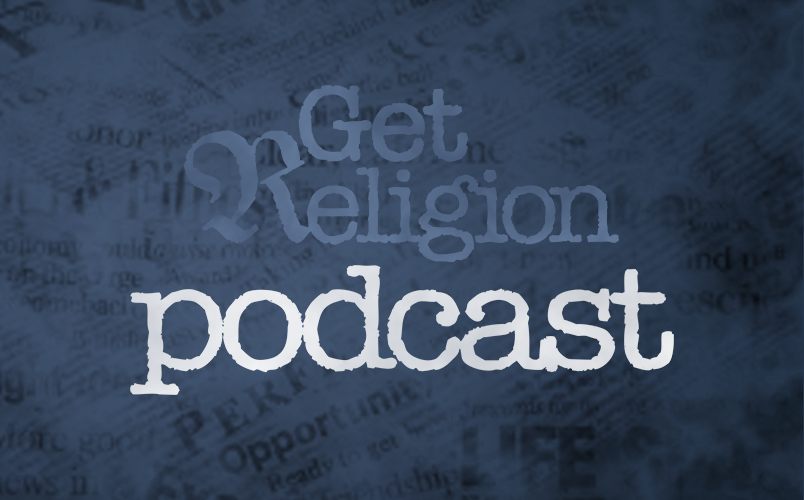I wrote about this last year for @Religion_Public. @jackmjenkins is right, Hispanic evangelicals are an interesting group. More conservative than white evangelicals on abortion/gay marriage but then more open to immigration. https://t.co/Xu8j78jDD8 https://t.co/o7Fzc4CEfg
— Ryan Burge 📊 (@ryanburge) October 25, 2019
Religion and politics. Religion and politics. Religion and politics.
Or, sometimes it’s politics and religion.
Either way, we all know what factor — more often than not — turns a religion-news story into a big news story in the eyes of most newsroom managers. Well, sex scandals are good, too.
Normally, this politics-and-religion reality bugs me, because there is so much more to the religion beat than whatever content happens to overlap with the current political headlines.
But, right now, I think it’s obvious that the biggest news story in American politics is directly linked to the biggest story in American religion. I am talking about a trend that has been discussed in several 2019 Crossroads podcasts — including this week’s edition (click here to tune that in).
It’s the growing polarization between the world of traditional religious believers (defined primarily in terms of the PRACTICE of their faith) and the growing flock of open atheists-agnostics and the spiritual-but-not-religious phenomenon that overlaps with the growth of the religiously unaffiliated. It lines up with the hotter-than-hades rift in American culture and politics.
There are so many stories linked to this. We’re talking about the demographic implosion of the old liberal Protestant mainline. Then there’s the surging number of independent churches and nondenominational believers. There’s a growing number of Americans — small, but important — in other world religions. There are people (like me) who grew up in one tradition (Southern Baptist, in this case) and converted to another (Eastern Orthodoxy).
There are so many numbers, so many polls. The Pew Research Center, LifeWay Research, Barna and others keep cracking out fascinating numbers.
In the podcast, I mentioned — once again — Donald Trump and the infamous “81% of white evangelicals just love Donald” theme that can be found in news coverage on a daily basis (or so it seems). Yes, about half of those white evangelicals wanted to vote to some other GOP candidate. And about 40% of evangelicals appear to have stayed home or some voted third party.
Out of all of the topics that floated into this week’s podcast, let me stress one — the changing religious world of Latino Americans. Consider this lede atop a recent Crux report:
A new study shows that the percentage of Catholics in the United States has fallen from nearly one-in-four to one-in-five, with the added news that Hispanics in America are no longer majority-Catholic.
Think about that, in terms of the familiar images and assumptions linked with Latino life.
So what is happening here? This is linked, of course, to the reshaping of the American religious marketplace. Let’s read on:
Although Catholic leaders might feel some comfort knowing they aren’t experiencing the same sort of decline as Protestants, they must be worried by the large number of Hispanic Catholics leaving the Church.
In 2009, 57 percent of Hispanics called themselves Catholic; it was only 47 percent in 2019. Only a small percentage of that can be attributed to joining other churches or religions — the number of Hispanics identifying as Protestant only rose from 23 in 2009 to 26 percent in 2017 (although the 2019 data showed 24 percent, the earlier survey is probably more thorough); and the number describing themselves as belonging to non-Christian religions rose from 1 percent to 3 percent. However, those describing themselves as atheist, agnostic or “nothing in particular” increased from 16 to 23 percent.
But wait. In states like Florida and Texas, the fact that 26% of Latinos are in other pews has massive cultural and, yes, political implications — especially since most of those pews are in evangelical and Pentecostal churches.
Here’s the question that I have asked several times in the past year or so: Would Donald Trump have won Florida (and, thus, the presidency) without a higher than anticipated number of votes from Latino evangelicals and Pentecostal Christians? Trump won somewhere between 38 and 33 percent of the massive Latino vote in Florida and he needed all of those votes. Did any exit poll group pay attention to Latino evangelicals and Pentecostals?
Just asking.
Recently, I asked church historian Thomas Kidd of Baylor University to name a trend he is watching carefully in American evangelicalism. Here is the end of that “On Religion” column:
“Evangelicals are covered, they are important, when they are a factor in politics — period,” said Kidd. “All of those evangelicals who are not even voting, and there are lots of them, may as well not even exist. Their lives, by definition, are not newsworthy.”
This national obsession with the clout of the “81 percent” of white evangelicals who voted for Trump may even be causing journalists and pollsters to miss important political stories, especially in rapidly changing states like Florida and Texas.
Right now, said Kidd, Latinos are the “most intriguing evangelicals, to me, because their numbers are growing so fast and their allegiances are totally up for grabs. … If you want to know where evangelicals are going, you have to watch all the independent churches, the storefront churches in big urban areas. Look at the churches that are growing and they are immigrant churches — all kinds of immigrants.”
This is just one story — out of dozen or so — that zipped through our discussion this week.
There are big stories hiding in all of these religion numbers and, yes, some of them have political implications.











